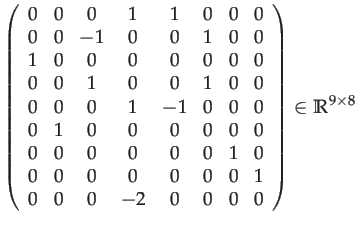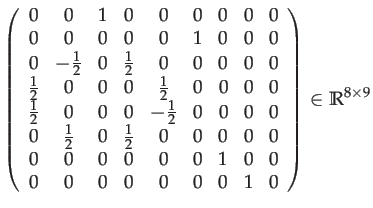Next: 8 SO(3) Up: 7 SL(3) Previous: 7.3 Exponential Map
First we treat elements of
![]() , which are
, which are
![]() matrices, as 9-vectors, writing the entries in row-major
order. Then, for
matrices, as 9-vectors, writing the entries in row-major
order. Then, for
![]() and
and
![]() ,
the conjugation
,
the conjugation
![]() can be expressed
as a linear mapping
can be expressed
as a linear mapping
![]() on the elements of
on the elements of
![]() . Pre- and post- applying matrix representations of
. Pre- and post- applying matrix representations of
![]() and
and
![]() respectively then gives the adjoint representation.
respectively then gives the adjoint representation.
Let
 |
(88) | ||
![$\displaystyle \left[\mathrm{alg}^{-1}\right]$](img199.png) |
 |
(89) | |
 |
(90) |
Then
![$\displaystyle \left[\mathrm{alg}^{-1}\right]\cdot\mathbf{C}_{\mathbf{H}}\cdot\left[\mathrm{alg}\right]$](img204.png) |
(91) |